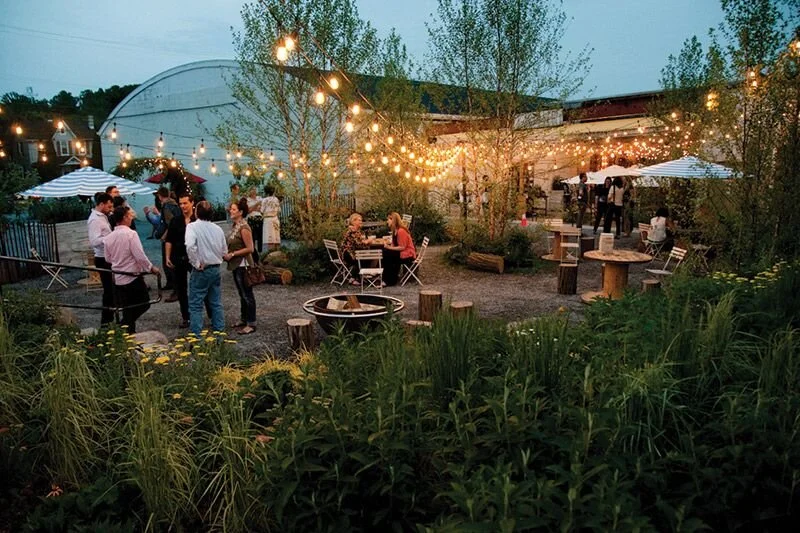
Pop-up Native Gardens
Woodlands & Monarchs @ the Kennett Library
Oak-Mixed Hardwood and Tuliptree-Beech-Maple woods are two native forest types in our area. Contiguous woodland corridors are vital for protection of birds and other wildlife. Oaks and the associated plants are especially beneficial as part of the essential food web as oaks support over 500 species of caterpillars which are essential for breeding birds to feed their young. Understory trees such as Dogwood, Redbud, and Serviceberry along with shrubs such as Viburnums, Winterberry, and Witch-hazel and a healthy ground layer of diverse perennials, ground cover plants and leaf litter provide essential nesting and habitat areas for wildlife and support caterpillars and pollinators as well. Lots of birds like our native Wood Thrush spend their time foraging in leaf litter. This is a great reason to cut down on the amount of raking you have to do every fall! Leaves and twigs of trees and shrubs help build the soil and attract many insects that are great food for birds.
Planting for Birds on the Kennett Greenway
Streamside landscapes are quintessential to Kennett as we are in the heart of the Red Clay Creek watershed. Creekside plantings protect water quality by filtering rainwater through dense or deep-rooted plantings. Since native plants do not require fertilizers and pesticides they also help keep harmful chemicals out of our water and soil. Plants that are adaptable to both wet or dry conditions are well suited for use in both streamside and rain garden plantings. Some great native trees and shrubs include River Birch, Serviceberry, Winterberry, Viburnum, Red Osier Dogwood, and Willow. Perennials for the understory and ground level include ferns, sedges, turtlehead, solomon’s seal, blue cardinal flower, swamp milkweed, Joe-Pye and swamp rose mallow.
Streamside Restoration @ Braeloch Brewing
Streamside landscapes are quintessential to Kennett as we are in the heart of the Red Clay Creek watershed. Creekside plantings protect water quality by filtering rainwater through dense or deep-rooted plantings. Since native plants do not require fertilizers and pesticides they also help keep harmful chemicals out of our water and soil.
Reclaiming Native Beauty @ The Creamery
Open Fields and Hedges are commonly found in home landscapes and also in our scenic Pennsylvania farms. The flowers, fruits, seeds, and autumn foliage of native perennials and shrubs add beauty to these sunny landscapes while providing food, nesting areas, and shelter which are vital to birds, bees, butterflies and other wildlife.










